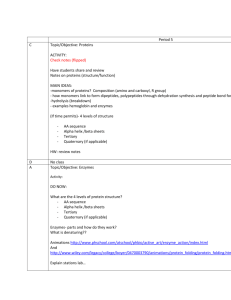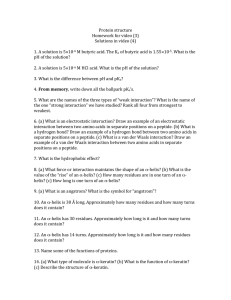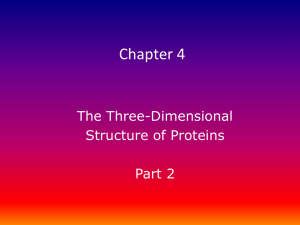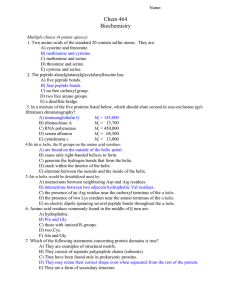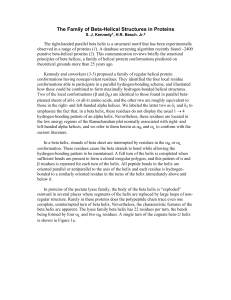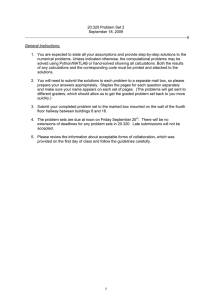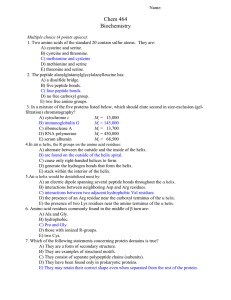Study Guide Chapter 6 Three Dimensional Structure of Proteins
advertisement
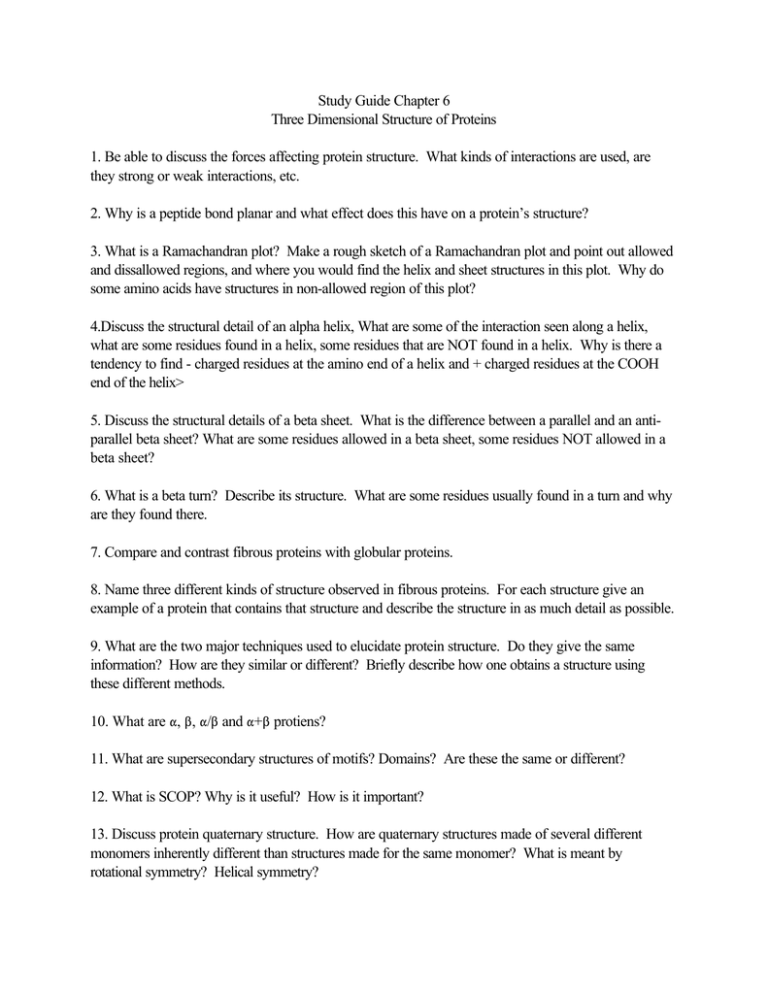
Study Guide Chapter 6 Three Dimensional Structure of Proteins 1. Be able to discuss the forces affecting protein structure. What kinds of interactions are used, are they strong or weak interactions, etc. 2. Why is a peptide bond planar and what effect does this have on a protein’s structure? 3. What is a Ramachandran plot? Make a rough sketch of a Ramachandran plot and point out allowed and dissallowed regions, and where you would find the helix and sheet structures in this plot. Why do some amino acids have structures in non-allowed region of this plot? 4.Discuss the structural detail of an alpha helix, What are some of the interaction seen along a helix, what are some residues found in a helix, some residues that are NOT found in a helix. Why is there a tendency to find - charged residues at the amino end of a helix and + charged residues at the COOH end of the helix> 5. Discuss the structural details of a beta sheet. What is the difference between a parallel and an antiparallel beta sheet? What are some residues allowed in a beta sheet, some residues NOT allowed in a beta sheet? 6. What is a beta turn? Describe its structure. What are some residues usually found in a turn and why are they found there. 7. Compare and contrast fibrous proteins with globular proteins. 8. Name three different kinds of structure observed in fibrous proteins. For each structure give an example of a protein that contains that structure and describe the structure in as much detail as possible. 9. What are the two major techniques used to elucidate protein structure. Do they give the same information? How are they similar or different? Briefly describe how one obtains a structure using these different methods. 10. What are ", $, "/$ and "+$ protiens? 11. What are supersecondary structures of motifs? Domains? Are these the same or different? 12. What is SCOP? Why is it useful? How is it important? 13. Discuss protein quaternary structure. How are quaternary structures made of several different monomers inherently different than structures made for the same monomer? What is meant by rotational symmetry? Helical symmetry? 14.What is denaturation? How can it occur? What was the Anfinsen experiment and why is it important in our understanding of protein folding? 15. Discuss the two major theories currently used to describe protein folding. How are they similar? How are they different? 16. What are molecular chaperones? Heat Shock Proteins? How are they involved in protein folding? Name some other proteins that are involved in protein folding in the cell and what are the functions of these proteins?
